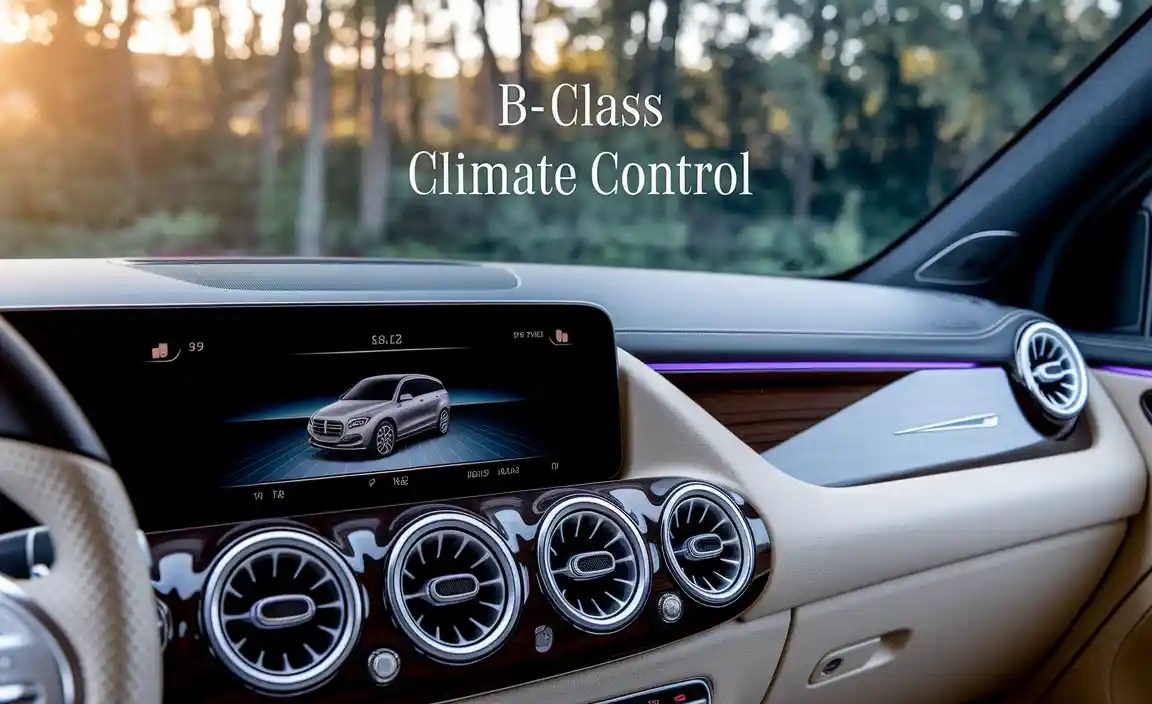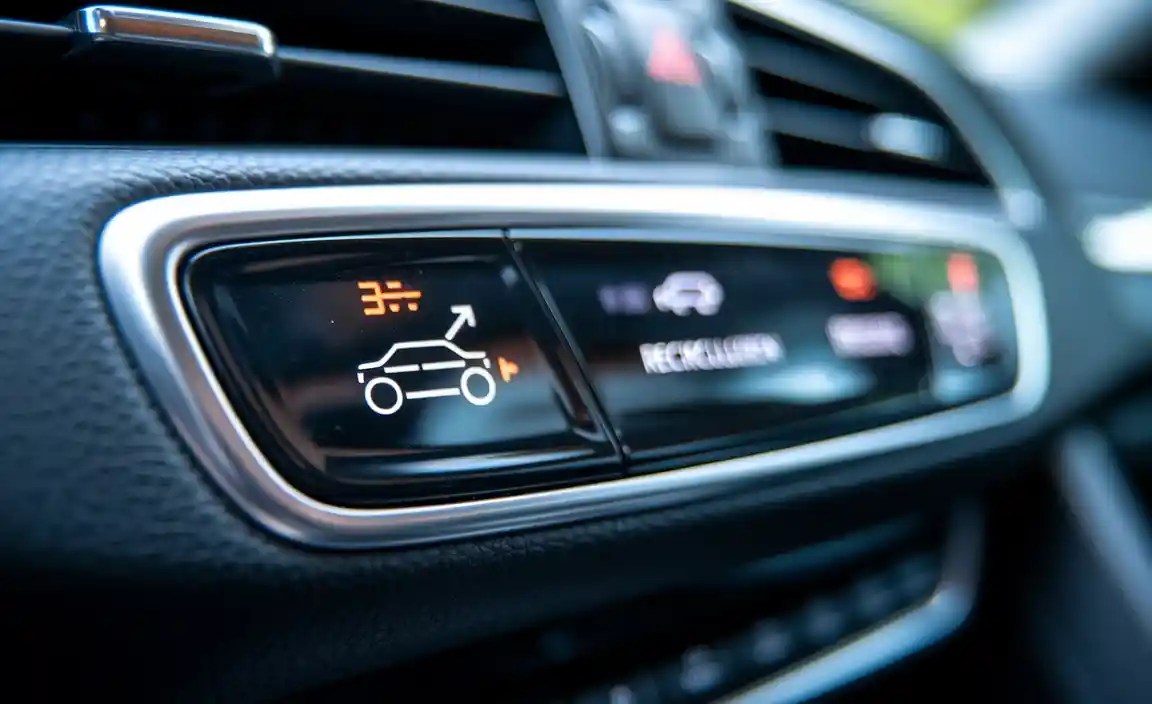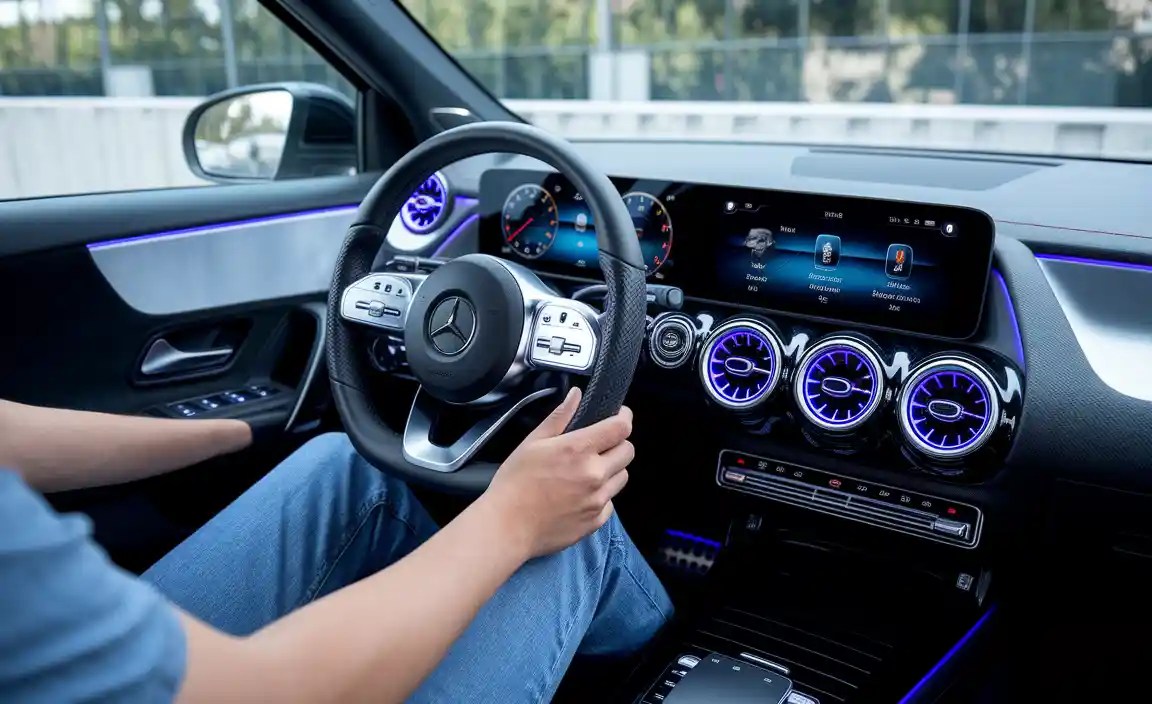B Class Climate Control: Your Ultimate Comfort
A key part of that luxury is the advanced climate control system. Ever stepped into a car on a sweltering day or a freezing morning and wished for instant relief? Your B-Class climate control is designed to do exactly that, and often, much more. Many drivers find the array of buttons and settings a bit daunting at first, but understanding them unlocks a new level of driving pleasure. This guide will demystify your B-Class climate control, showing you how to master it for ultimate comfort. We’ll walk through its functions, settings, and how to keep it running smoothly so you can always enjoy the ideal cabin environment.

Understanding Your B-Class Climate Control’s Core Functions
At its heart, your B-Class climate control system is an intelligent system designed to maintain a consistent and pleasant interior temperature. Unlike basic air conditioning that just cools, or heaters that just warm, a climate control system actively monitors and adjusts based on your preferences and ambient conditions. It uses sensors to detect the inside and outside temperatures, humidity levels, and even sunlight intensity. Based on this data, the system automatically controls the fan speed, air intake (recirculating or fresh air), temperature blend, and where the air is directed to achieve your set temperature as efficiently as possible.
This automatic operation is what sets true climate control apart. You set your desired temperature, and the system works diligently to maintain it, preventing those annoying fluctuations where it gets too cold or too hot. It’s a set-it-and-forget-it solution for optimal cabin comfort, allowing you to focus on the road ahead.
Key Components of Your Climate Control System
To better understand how it works, let’s break down the main components you’ll interact with and that are working behind the scenes:
Control Panel: This is your command center. Usually located on the dashboard, it features buttons, knobs, and often a display screen to adjust settings.
Temperature Sensors: These small devices are strategically placed inside and sometimes outside the vehicle to measure the air temperature. They are crucial for the system’s automatic adjustments.
Evaporator and Condenser: These are the core parts of the air conditioning system. The evaporator cools the air by removing moisture, while the condenser releases heat from the refrigerant.
Blower Motor: This fan pushes the conditioned air through the vents into the cabin.
Air Distribution System: Flaps and ducts direct the airflow to specific areas like the dashboard vents, floor vents, or windshield defrosters.
Air Filter: This component cleans the air entering the cabin, trapping dust, pollen, and other pollutants.
Mastering the Control Panel: Step-by-Step
Navigating the climate control panel for the first time might seem complex, but it’s designed for intuitive use. Let’s break down the typical functions:
Setting Your Desired Temperature
This is the primary function. You’ll usually find buttons or a dial to increase or decrease the target temperature.
1. Locate Temperature Controls: Look for symbols like a thermometer or a dial with temperature markings (e.g., 18-25°C or 64-77°F).
2. Adjust to Your Preference: Press the up button or turn the dial clockwise to increase the temperature, and vice versa for cooler air.
3. Automatic Mode: Most systems have an ‘AUTO’ button. Pressing this engages the system’s intelligent operation. It will automatically manage fan speed and air distribution to reach and maintain your set temperature. This is generally the most efficient and comfortable setting.
Fan Speed Control
While AUTO mode often handles this, you can manually adjust the fan speed if needed.
1. Find the Fan Icon: Look for a symbol resembling a fan with radiating lines or an indicator showing fan speed levels.
2. Increase/Decrease: Use the buttons or dial to select a higher or lower fan speed. Higher speeds cool or heat the cabin faster, but can be noisier.
Airflow Direction (Vents)
You can choose where the air is directed.
1. Identify Vent Icons: Look for symbols showing airflow patterns:
Dashboard Vents: Often represented by an arrow pointing straight ahead or slightly upwards.
Floor Vents: Symbol may show air flowing downwards.
Windshield Defroster: Symbol usually depicts air blowing onto a windshield.
Face/Body Icon: Indicates air directed towards passengers.
2. Select Your Desired Direction: Press the corresponding button to activate or deactivate that airflow path. In AUTO mode, the system intelligently distributes air.
Recirculation vs. Fresh Air

This feature controls whether the system draws air from outside or recirculates the air inside the cabin.
1. Recirculation Button: Look for a symbol of a car with a U-turn arrow inside it.
2. Fresh Air Button: Often the default or indicated by an arrow entering the car from the outside.
3. When to Use Recirculation:
Quick Cooling/Heating: Helps the system reach the set temperature faster by not having to condition external air.
Poor Outdoor Air Quality: Use when driving through tunnels, heavy traffic, or areas with strong odors or pollution.
4. When to Use Fresh Air:
Longer Driving: Prevents the air from becoming stale and reduces humidity buildup.
Defogging: Fresh air helps clear a foggy windshield more effectively than recirculated air.
Air Conditioning (A/C) Button
This button engages the air conditioning compressor to cool and dehumidify the air.
1. Locate the A/C Button: It’s usually labeled “A/C”.
2. Engage for Cooling: Press it to turn on the cooling function. The light on the button typically illuminates when active.
3. Deactivate for Heating/Ventilation: When using heating or just fan-only ventilation, you can turn off A/C to save energy, though in some modes (like defrosting), the system may automatically engage A/C to reduce humidity.
Defrost/Defog Settings
These are crucial for visibility.
1. Front Defrost: Typically a button with a windshield symbol. This directs maximum airflow to the windshield, often using heated air and engaging A/C to dehumidify.
2. Rear Defrost: A button with a rectangle and wavy lines, warming the rear window.
Advanced Features and Tips for Optimal Comfort
Beyond the basic functions, your B-Class climate control likely has features to enhance your experience. Mercedes-Benz is renowned for its attention to detail.
Dual-Zone or Multi-Zone Climate Control
Many B-Class models feature dual-zone climate control, allowing the driver and front passenger to set independent temperatures. Some higher trims might offer rear-zone controls as well.
How it Works: Simply adjust the temperature for your zone using the controls. The system will manage airflow and temperature blend independently for each area.
Benefit: This is ideal for couples or families with differing temperature preferences, ensuring everyone enjoys their ideal comfort level.
Air Quality Sensors and Ionization
Your B-Class may be equipped with advanced air filtration and ionization systems.
Air Quality Sensor: Detects pollutants in the outside air and automatically switches to recirculation mode to prevent them from entering the cabin.
Active Filter System (e.g., ENERGIZING PACKAGE): Some models use multi-stage filters that can remove fine dust and pollen.
IONIZER/AIR BALANCE Package: This feature can enrich the cabin air with ions and also release a subtle, pleasant fragrance, enhancing the overall sensory experience.
ENTIRELY AUTOMATIC Operation (AUTO Mode)
We cannot stress enough how effective AUTO mode is. It synchronizes all climate control functions—fan speed, temperature, air distribution, and recirculation—to achieve your desired climate efficiently.
How to Use: Set your preferred temperature and press the ‘AUTO’ button. The system will do the rest.
Why it’s Great: It minimizes manual adjustments, reduces noise by optimizing fan speed, and generally employs the most energy-efficient strategy. The system often prioritizes clear windshields by automatically directing air appropriately.
Understanding the Air Distribution Icons
| Icon | Description | Common Use Cases |
| :———————— | :———————————————- | :——————————————————————————————————— |
| | Air directed towards the windshield. | Defrosting, defogging the windshield, especially in cold or humid conditions. |
| | Air directed towards the occupants’ faces. | General comfort, circulating air, feeling a direct breeze. |
| | Air directed towards the footwells. | Heating the cabin (warm air rises), providing subtle air circulation. |
| | Dual airflow directed at face and feet. | Balances upper and lower body comfort comfortably. |
| | Air distributed from all primary vent zones. | Maximum air circulation, quickly adjusting cabin temperature. |
(Note: Actual icons may vary slightly by model year and trim.)
Maintaining Your B-Class Climate Control System
A well-maintained system provides years of comfortable driving. Here are the essential maintenance steps:
Regularly Replace the Cabin Air Filter
This is arguably the most critical piece of maintenance for your climate control system and your health.
Why it’s Important: The cabin air filter traps dust, pollen, soot, and other airborne particles. A clogged filter restricts airflow, reduces cooling/heating efficiency, and can lead to unpleasant odors.
When to Replace: Check your owner’s manual for the recommended interval, typically every 10,000 to 15,000 miles or once a year. If you notice reduced airflow or a musty smell, replace it sooner.
DIY or Professional: Replacing the cabin air filter is often a straightforward DIY task, usually located behind the glove box. Many owners find this task manageable by following online tutorials or consulting their owner’s manual. Reputable DIY resources like AutoZone’s guide can walk you through the process.
Check for Leaks and Blockages
Periodically inspect around the vehicle for any signs of fluid leaks. While not always directly related to climate control, a leak could indicate issues with the system or its components. Ensure that exterior air intake vents (usually near the windshield wipers) are clear of leaves, snow, or debris.
Listen for Strange Noises
Unusual sounds from the climate control system – such as grinding, squealing, or hissing – can indicate a problem needing professional attention. Grinding might suggest a failing blower motor, for example.
Professional Servicing
Have your climate control system inspected by a qualified Mercedes-Benz technician during your regular service appointments. They can check refrigerant levels, inspect seals and hoses, and ensure all components are functioning optimally. For more information on Mercedes-Benz maintenance schedules, consult the official Mercedes-Benz owner’s manuals portal.
Troubleshooting Common Climate Control Issues
Even with meticulous care, you might encounter minor issues from time to time. Here are some common problems and their potential solutions:
Problem: No Cool Air or Weak Cooling
Possible Causes:
A/C system is turned off.
Refrigerant low (requires professional recharge).
Compressor not engaging.
Cabin air filter is severely clogged.
Blend door actuator malfunctioning.
What You Can Do:
Ensure the A/C button is pressed and the AC light is on.
Check and replace the cabin air filter if dirty.
Listen for the clutch engaging on the A/C compressor when the A/C is on (a distinct click).
If these simple checks don’t resolve it, seek professional diagnosis.
Problem: No or Weak Heat
Possible Causes:
Heater core issue (often requires professional repair for leaks or blockages).
Engine coolant low or system needs bleeding. Modern cars use engine heat to warm the cabin.
Thermostat issue.
Blend door actuator not directing hot air.
What You Can Do:
Check your engine coolant level.
Ensure the temperature is set to a high setting.
If engine coolant is fine and you still have no heat, it likely needs professional attention.
Problem: Strange Odors (Musty or Mildew Smell)
Possible Causes:
Clogged cabin air filter.
Moisture trapped in the A/C evaporator or ductwork, leading to mold growth.
What You Can Do:
Replace the cabin air filter.
Use the A/C system regularly, even in winter, to help dry out the evaporator.
Run the fan only (with A/C off) for a few minutes after a drive to help dry components.
Consider using an A/C system cleaner spray, which can mist into the intake or via the drain hose, following product instructions carefully.
Problem: Uneven Temperature Distribution (Hotter/Colder on One Side)
Possible Causes:
Dual-zone controls are set incorrectly (if applicable).
Blocked air vents.
A blend door actuator is not functioning correctly.
What You Can Do:
Check your dual-zone settings if your car has them.
Ensure no objects are blocking the vents.
If the issue persists, a blend door actuator might need replacement.
B Class Climate Control vs. Manual AC: Key Differences

It’s helpful to understand why your B-Class system offers a superior experience compared to simpler manual air conditioning found in older or less luxurious vehicles.
| Feature | B Class Climate Control | Manual Air Conditioning |
|---|---|---|
| Temperature Control | Automatic (set desired temp, system maintains it) | Manual (adjust temperature manually, often with a limited range, requires constant monitoring) |
| Fan Speed | Automatic (adjusts based on need) or Manual | Manual (user must set and adjust) |
| Air Distribution | Automatic (intelligently directs air) or Manual | Manual (user selects vents) |
| Air Source | Automatic (switches between fresh/recirculate) or Manual | Manual (user selects fresh/recirculate) |
| Sensors | Uses internal/external sensors for precise control | No sensors; relies solely on user input |
| Comfort Level | High and consistent | Variable; requires frequent adjustments |
| Efficiency | Generally more efficient, optimizing system use | Can be less efficient if not managed correctly |
The “set it and forget it” nature of climate control, combined with its ability to react to changing conditions, truly elevates the driving experience.
Frequently Asked Questions (FAQ)
Q1: How do I make my B-Class cooler faster?
A1: To cool down quickly, set your desired low temperature, press the ‘A/C’ button firmly to engage the cooling, and press the ‘AUTO’ button. This allows the system to run the fan at its highest setting and optimally direct airflow until your set temperature is reached.
Q2: Can I use the climate control in winter for heating?
A2: Absolutely! Your B-Class climate control system provides efficient heating. Set your desired warm temperature, and the system will automatically manage the airflow and fan speed. Using the ‘AUTO’ mode is highly recommended for optimal heating performance and comfort.
Q3: What is the ‘AUTO’ button on my climate control?
A3: The ‘AUTO’ button activates the fully automatic mode. The system uses sensors to monitor cabin temperature, humidity, and sun load, then automatically adjusts fan speed, air distribution, and air intake (fresh or recirculated) to maintain your selected temperature precisely and efficiently.
Q4: How often should I replace my cabin air filter?
A4: Mercedes-Benz typically recommends replacing the cabin air filter every 15,000 miles or annually. However, if you drive in dusty or polluted areas, or notice reduced airflow or odors, it’s best to replace it sooner. Consult your owner’s manual for the precise interval for your model year.







